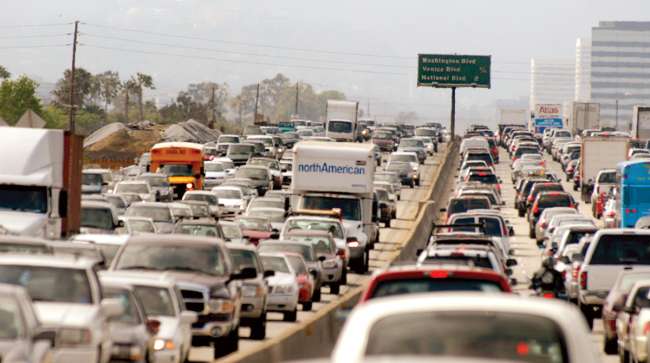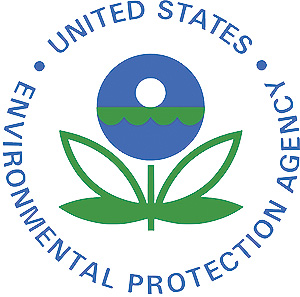Senior Reporter
Trucking Mostly Supports EPA Emissions Plan, but Small Fleets Skeptical

[Stay on top of transportation news: Get TTNews in your inbox.]
Stakeholder comments on the Environmental Protection Agency’s plans to aggressively reduce oxides of nitrogen emissions generally were positive, but with some caveats.
Large trade groups ranging from American Trucking Associations and the Truck and Engine Manufacturers Association (EMA) to state environmental quality departments from the West Coast to America’s Heartland mostly supported EPA’s 50-state Clean Trucks Initiative.
That certainly was not the case for everyone, including independent operators and small motor carriers that widely viewed the plan as damaging their livelihoods.
“American Trucking Associations supports the underlying goals of the Cleaner Trucks Initiative and appreciates EPA’s receptiveness in considering stakeholder input,” ATA wrote in comments that closed Feb. 20. “While the CTI is not specifically directed at trucking fleets, the trucking industry’s future purchasing decisions will ultimately decide the success or failure of this rule.

“The consistent messaging from fleets to ATA regarding the CTI is abundantly clear — minimize purchase, maintenance and operational costs; maximize performance, durability and driver satisfaction; maintain fleet flexibility in technology and fuel choices; and do not create unintended consequences such as equipment pre-buys, low post-buys, alteration of fleet turnover cycles and fuel-economy degradation.”
EMA said it also supports EPA’s efforts to develop next-tier heavy-duty on-highway (HDOH) regulations that optimize and streamline the control of NOx emissions, for new HDOH engines and vehicles.
“More specifically, EPA’s previous, highly successful HDOH regulations already have resulted in particulate matter and NOx reductions of 99% and 98%, respectively, from unregulated baselines,” EMA said. “While that is a real testament to the efficacy of EPA’s earlier regulations, it also will require extra care and effort to fashion the next-tier of HDOH emission-reduction regulations in a cost-effective manner, since the remaining marginal emission reductions will be relatively small, while the attendant incremental costs could be relatively high.”
Environmental departments in Oregon, Nevada, Port of Long Beach, New York City, Maryland, Georgia, Utah, North Carolina, Delaware, Vermont, Wisconsin and Minnesota expressed support for the EPA NOx proposal.
Compare each of the presidential candidates' plans for addressing America's infrastructure needs. See our Candidate Infrastructure Tracker.
“Since the federal Clean Air Act pre-empts all states, except for California, from establishing their own motor vehicle emission standards, it is critical that EPA periodically revisit the national standards and assess current technology and review current public health information,” the Oregon Department of Environmental Quality wrote.
The California Air Resources Board is putting the finishing touches on its NOx emissions rule for heavy trucks slated to begin with 2024 model years. On the other hand, EPA’s rule is not expected to be ready for implementation until 2026 or 2027.
In comments, CARB said its staff is “encouraged to see that one of the goals articulated in [EPA’s] ANPRM is to establish a coordinated 50-state program.”
“CARB staff wholeheartedly supports that goal and encourages U.S. EPA in the Cleaner Trucks Initiative to align with California’s program toward that end,” CARB wrote. “Although California’s Heavy-Duty Omnibus Low NOx Regulation will likely take effect ahead of the CTI with model year 2024, we encourage U.S. EPA to have the CTI take effect as early as possible, given federal lead-time constraints, preferably with the 2026 model year.”
Although it said it generally supported a 50-state NOx rule, the Owner-Operator Independent Drivers Association said it hoped the EPA approach “will result in practical, cost-effective standards that do not unfairly burden professional truckers.”

“This would represent a welcomed departure from previous emissions rulemakings that proved disastrous for small carriers and owner-operators,” OOIDA said in a statement. “Owner-operators should not be used as ‘guinea pigs’ for testing new technology while getting priced out of business in the process, which is what regrettably occurred during previous emissions rulemakings.”
David Owen, president of the National Association of Small Trucking Companies, had harsh words for EPA’s plan.
“Collateral damage, anecdotal examples, and unintended consequences from a misguided and overzealous federal government continue to devastate small businesses in the trucking industry,” Owen wrote. “A ‘let them eat cake’ attitude toward the 99% of for-hire carriers who deliver America’s stuff will eventually have an ‘Atlas Shrugged’ effect on trucking and ultimately our distribution system.”
“We live in the Midwest in the heart of an agriculture community,” wrote Swanny’s Trucking, of Bourbon, Ind. “We haul ag products that helps feed America. Most of us have older-model trucks that are pre-emissions. If regulations are passed forcing us to add some sort of emissions on these older trucks, it would put most of the ag haulers out of business and devastate the farming industry.”
Want more news? Listen to today's daily briefing:




